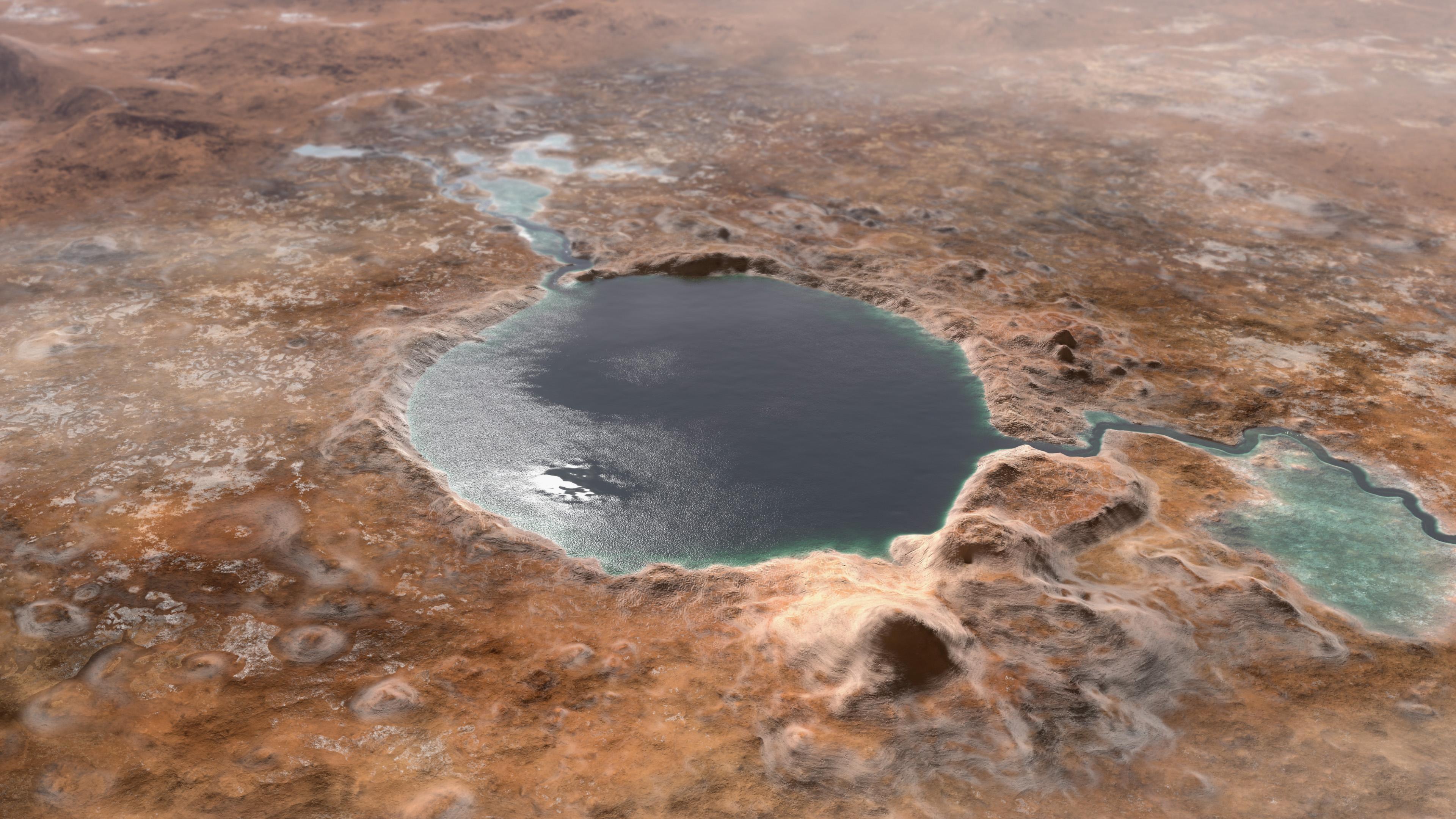If the Perseverance rover found evidence of life on Mars, would we recognize it?

NASA's Perseverance rover is scurrying around on the Red Planet, wheeling and dealing around Jezero Crater and inspecting the site of this former lake up close.

NASA's Perseverance rover is scurrying around on the Red Planet, wheeling and dealing around Jezero Crater and inspecting the site of this former lake up close.
The rover recently came across some eye-catching circular rock structures, and they are attention-grabbers for good reason. That's because they resemble ones formed by microbial communities in some lakes on Earth.
But the finding underscores, perhaps, how Mother Nature on the Red Planet can make it difficult to conclude what might or might not constitute evidence for life on that world.
Related: NASA's Perseverance rover sets record for longest Mars drive on autopilot
Or, on the other hand, could we be missing something?
Several top Mars specialists offer their thoughts and advice on what's the real gist from Jezero.
Too good to be true
"I was genuinely excited when I first saw these circular features because of what I imagined microbialite structures might look like after a lake dries up and erosion takes over," said Steve Ruff, an Arizona State University planetary geologist with a focus on the mineralogy of Mars at the School of Earth and Space Exploration.
Breaking space news, the latest updates on rocket launches, skywatching events and more!
Microbialites are rock-like underwater structures that take on the look of reefs but consist mainly of millions of microbes.
"But it also seemed too good to be true and I quickly recognized details that are inconsistent with a biologic origin," Ruff told Space.com.
Ruff said that, because it's Mars, with no confirmed proof of life, you've got to always first assume that biology is not involved and look for geologic explanations.
"Only when there's no compelling geologic explanation should biology be seriously considered. Even then, there needs to be extraordinary evidence, as Carl Sagan said, to claim evidence for life," Ruff advised.
As an independent Mars sleuth, Ruff added that he is hopeful that Perseverance rover science members can actually address what they concluded about these features.
Alternative explanations
Alexis Rodriguez, a senior scientist of the Planetary Science Institute in Tucson, Arizona said that anything that could point to life from such a distant past deserves serious attention.
"My understanding is that while the circular features are considered to be possible evidence of stromatolite-like mounds, the evidence is not unequivocal and it seems that some alternative explanations have not been ruled out," Rodriguez said. "However, if they are indeed biogenic features there are numerous important implications of interest to the general public."
For example, Rodriguez said that the persistence of stromatolites in a given geological setting suggests a stable, long-term presence of liquid water, as they require time for formation.
"Hence, their existence implies that the water in those locales did not freeze for extended periods, allowing for the continual biological activity necessary for stromatolite growth," Rodriguez added. "This implication carries tremendous weight on our understanding of Mars' early climate, touching on the debate on whether it was mostly much colder than that of early Earth or a much closer match."
Meeting the criteria
It is true that nature is more creative than we could imagine, said Catherine Gillen of Durham University in the U.K., working on the Exploring Uncertainty and Risk in Contemporary Astrobiology (EURiCA) project that seeks to define and establish the definitions of what constitutes astrobiology, the study of the origins of life throughout the universe.
"There does indeed seem to exist a biological explanation for these circular rock structures due to their similarity with microbial structures on Earth," Gillen said.
"However, the researchers were right not to just leave it there! The resemblance to corestones seems to offer a promising abiotic [not living or composed of living things] explanation that should be preferred over any biological one," said Gillen. "As such, these structures would likely not meet the criteria for biosignature under the proposed definition."
Defining a biosignature
Gillen is the lead author of a recently published paper in the journal "Astrobiology" making a call for a "new definition" of biosignature.
Gillen and colleagues note that the term biosignature has been useful to the community, but its meaning remains unsettled.
Indeed, existing definitions conflict greatly over the balance of evidence needed to establish a biosignature, they report, which leads to mix-ups and puzzlement about what is being claimed when biosignatures are purportedly detected.
In an attempt to resolve this, Gillen and associates suggest the term "biosignature" is used to describe any phenomenon for which biological processes are a known possible explanation and whose potential abiotic causes have been reasonably explored and ruled out.
The thrust of their call is to narrow the gap between the detection of a biosignature and a confirmed discovery of life.
Images are not enough
Underscoring the tough slog up a slippery slope to hopefully rise to a level of evidence needed to make a compelling case for life on Mars is Chris McKay of NASA's Ames Research Center.
A noted Mars specialist, McKay is also an associate editor of the "International Journal of Astrobiology." He recalls receiving a paper about a year ago making the same general claim for Perseverance rover imagery of rocks that look like life.
"Perseverance, unlike the Curiosity Mars rover, has a Raman spectrometer. I asked the author to get the corresponding Raman spectrum and see if there was any organic signal consistent with biological organics. The author tried but there was nothing there," said McKay. "My view is that the images are not enough … way too ambiguous to make a case for something as interesting as life."
Meanwhile, as the Perseverance wheels turn, the robot continues to roll out scientific offerings from Jezero Crater. It is possible that microbial life could have lived there and is preserved in that location.
But sorting out that story is indeed a painstaking and meticulous process … so stay tuned!

Leonard David is an award-winning space journalist who has been reporting on space activities for more than 50 years. Currently writing as Space.com's Space Insider Columnist among his other projects, Leonard has authored numerous books on space exploration, Mars missions and more, with his latest being "Moon Rush: The New Space Race" published in 2019 by National Geographic. He also wrote "Mars: Our Future on the Red Planet" released in 2016 by National Geographic. Leonard has served as a correspondent for SpaceNews, Scientific American and Aerospace America for the AIAA. He has received many awards, including the first Ordway Award for Sustained Excellence in Spaceflight History in 2015 at the AAS Wernher von Braun Memorial Symposium. You can find out Leonard's latest project at his website and on Twitter.



